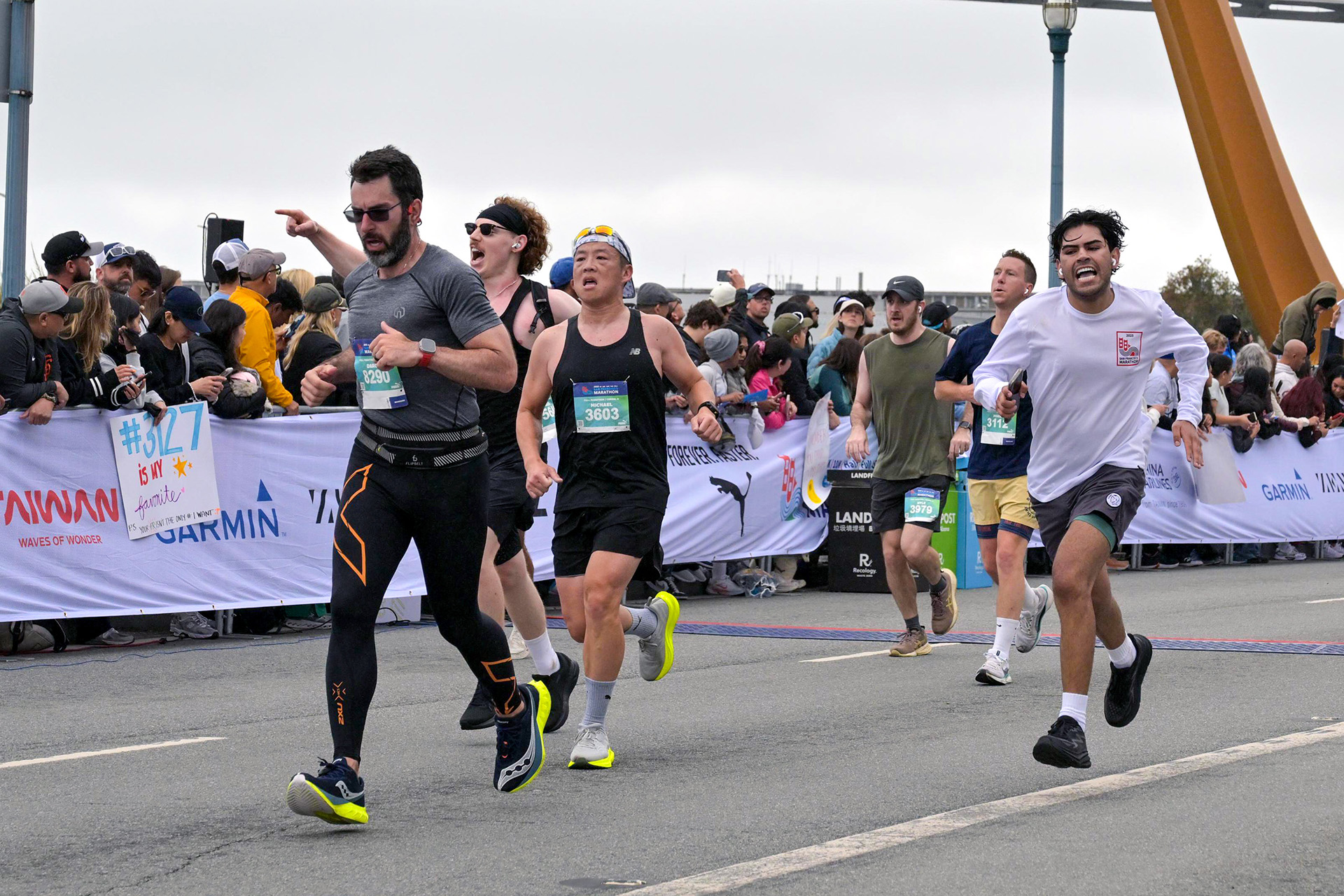Coming Back to the Start Line 20 Minutes Faster
I ran my third marathon this summer, and it felt like coming home after a long detour.
The last time I crossed a marathon finish line was Istanbul in 2022. That month I ran two marathons in 30 days, trimming my time from 4:47 to 4:40. Then life happened. I put on weight, back up to 135 kilos (~298 lbs), and then fought my way back down. My 2023 goal was to run the San Francisco Marathon, but an injury benched me. I still flew out, spent the weekend in the city, and watched the race I’d trained for without me. That stung, but I knew I’d be back.
Two years later, I was.
No Expectations, Just a Start Line
I lined up in San Francisco with one simple goal: finish under five hours. I wasn’t chasing a PR. If I ran 4:40 again, that would be a win.

Three hours in, the familiar villain showed up: a sharp stab on the outside of my left knee, my dear friend, IT band syndrome. Normally that’s the beginning of the end for me. Stretch, relief, pain again in 20 minutes, and then shorter and shorter intervals until I have to stop every five minutes. It’s the loop I know too well.
So, I pulled over, did a quick stretch, and changed one thing: I shifted the pressure toward the middle/inside of my foot to take some strain off the IT band. I’ve used that cue before, but never with dramatic results. This time, the pain never came back. I kept waiting for it, but mile after mile ticked by and I felt… good. I wasn’t forcing a pace; I was just running. I crossed the finish in 4:19, about twenty minutes faster than my last marathon. I didn’t see that coming.
What I Did Differently
Two choices probably made the day:
- I usually run on an empty stomach and keep race-day nutrition simple. This time I hit the aid stations, took electrolytes at every stop, and grabbed the carb drinks when they were offered. All in, I probably took in around 2,000 calories during the race. No stomach issues, just steady energy.
- When the IT band flared, I shifted weight toward the mid/inside of my foot. That subtle change kept the strain off my knee enough to finish comfortably.
By the way, huge credit to the organizers. Aid stations were plentiful, volunteers were on it, and the course moved. People talk a lot about San Francisco’s hills; to me they were real but not outrageous. Rolling? Yes. Extraordinary? Not really, which is good!
After the Finish Line
Thirty minutes after the medal, I started down a set of stairs and a lightning bolt hit my knee. Downhill is the IT band’s favorite playground, and San Francisco has plenty of it. During the race I let the descents roll because I felt fine. Afterward, the bill came due. I could’nt even walk. The next day I planned a gentle 20-minute shakeout jog. I had to stop after just two minutes. The day after that, I tried again and lasted five minutes. A month later, outside runs are still a coin toss: sometimes 30 minutes, sometimes 40–50 before the pain returns, especially if there is any downhill.

Rehab Mode (Again)
For now I’m living on the treadmill at a 2% incline to avoid downhill loading, plus hip strength work and mobility. I miss the trails and the randomness of outdoor running, but I’m not eager to relive the stair-pain saga. I’ve got another marathon on the calendar for November 30. If I’m ready, great. If I’m not, that’s okay too. I’ll give it a week or two, then take an honest outdoor test run and see what the IT band allows.
What This Taught Me (or Reminded Me)
I’ve been running since 2013, and if there’s a single theme to my journey, it’s learning to live with my IT band instead of pretending it doesn’t exist. This race added a few notes to that file:
- Fuel is free speed. I’ve been stubborn about fasted runs. In San Francisco, feeding the machine changed the day.
- One good cue beats ten random fixes. “Shift weight toward mid/inside foot” sounds almost too simple, but simple works when it’s specific.
- Pain is a lagging indicator. The race felt fine; the stairs afterward told the truth. Respect the downhills, even when you feel bulletproof.
- Progress doesn’t always look linear. I went from a DNS (Did not Start) in 2023 to a 20-minute PR two years later, with the same cranky knee. The path wasn’t pretty, but it moved forward.
Closing the Loop
I didn’t expect a PR. I expected a fight. I got both. The win happened on race day; the fight continues in the quiet runs after, where no one’s handing you a medal for stopping at ten minutes because you’re thinking long-term. Two years after watching this race from the sidelines, I got to run it. That alone would have been enough. Finishing twenty minutes faster than my 2022 best was a bonus, and a reminder that comebacks aren’t magic. They’re a string of small, stubborn choices that eventually add up.
See you at the next start line, whenever my IT band says we’re good to go.